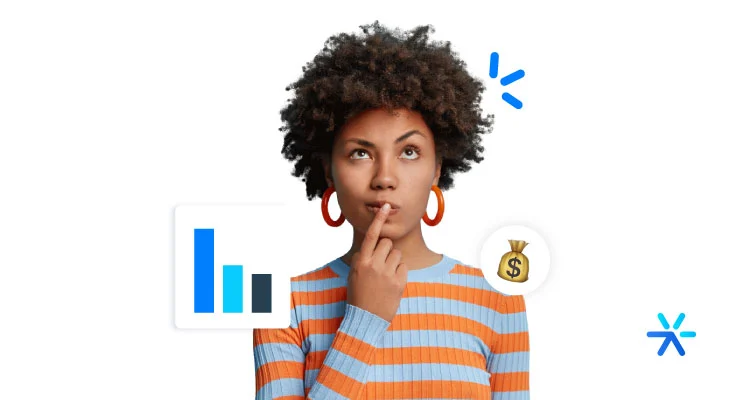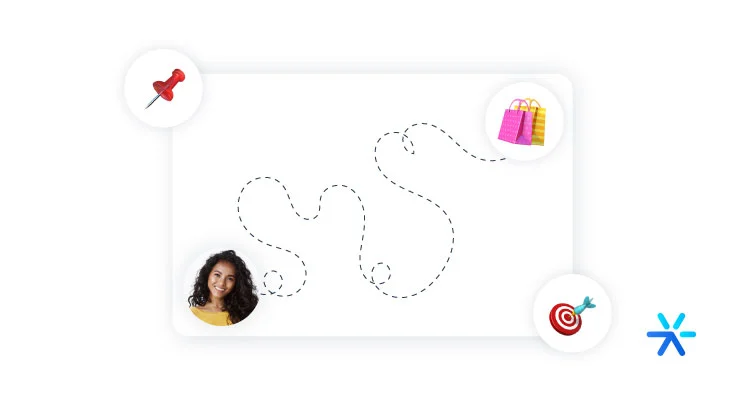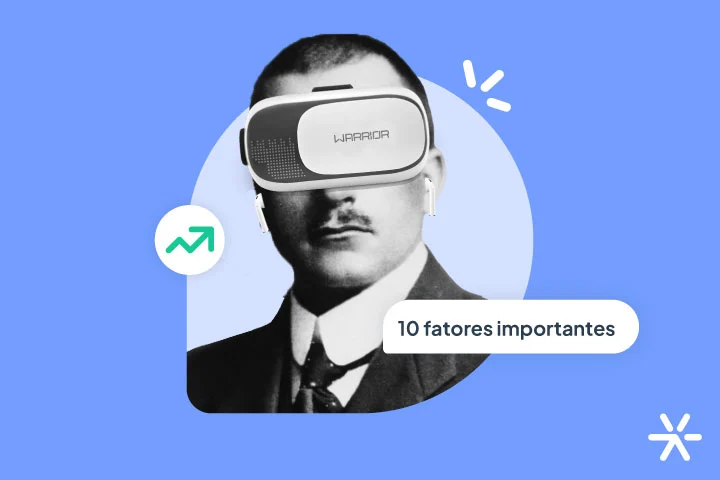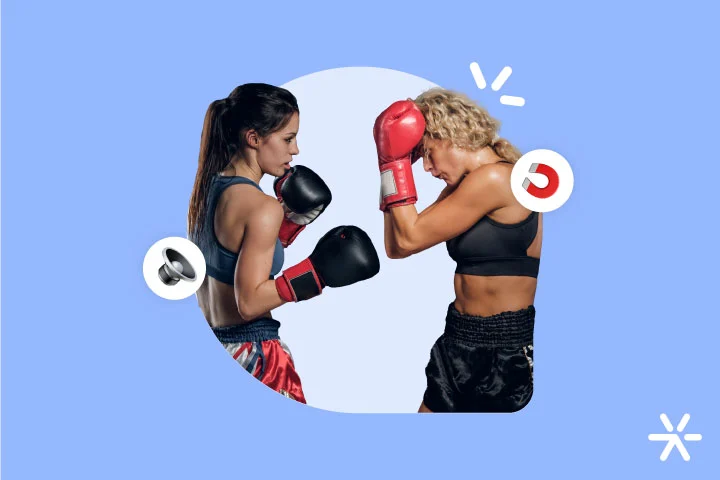Consumer Psychology: Journey and 10 Important Factors
Consumer psychology has a significant impact on how brands communicate. By understanding who our customers are, how they act, and why they buy, we greatly increase our chances of selling.
However, despite this clear impact, truly understanding consumer psychology remains challenging. This is because it changes easily—depending on the industry, the era we live in, the economy, and even age.
It’s common to find articles online that describe consumer psychology in black-and-white terms, as if it’s all or nothing. But the reality is far more nuanced.
In fact, there are various psychologies for different groups of people, along with frameworks that help decipher these specific concepts.
In other words: everyone thinks differently. But studying consumer psychology provides tools to understand these differences.
Shall we start by exploring this topic further?
The Relationship Between Psychology and Consumer Behavior

The field of consumer psychology is well-defined: it studies the processes involved in individuals’ or groups’ decisions related to the selection, purchase, use, and disposal of products, services, experiences, or ideas.
Yes, even ideas: consumer psychology applies to situations like making donations, for instance.
So, we already begin to see that consumer psychology extends far beyond the act of purchasing. In formal academic studies, this subject is explored from various perspectives.
Consumer psychology is multidisciplinary—meaning it intersects with several fields of study, including marketing.
In marketing, however, the study is more focused on understanding the consumer of a particular market and predicting their behavior.
Initially, consumer psychology focused on the act of purchasing—the transaction itself. But today, we know it goes much further. The act of buying has become a complex process, necessitating equally complex analysis.
We now view the entire consumer journey as an essential part of the subject. This understanding has driven the evolution of marketing strategies.
Key Definitions in Consumer Psychology
Before diving into the technical aspects of this article, we need to clarify exactly what we’re discussing.
As you may have gathered from the previous section, consumer psychology isn’t just the study of why people buy.
To better understand this article and extract valuable insights, we need to establish some basic concepts to ensure we’re on the same page.
Here’s a quick overview of what we mean by consumer psychology:
- It encompasses the entire process: selection, purchase, use, disposal, and preference.
- The process can be long or short: but it’s always occurring and repeating—it doesn’t have a fixed beginning or end.
- People don’t just buy for functionality: they buy for what a product represents in their lives at a given moment.
- Consumer psychology revolves around needs: but these needs don’t always relate to the product’s purpose. For instance, “hunger” is a need, but “ice cream” fulfills more than just food consumption.
- The cycle repeats: Identifying a need leads to seeking solutions, evaluating alternatives, and making a purchase. When the need arises again, the consumer evaluates their past experience, deciding to stick with or switch brands/products.
These points are outlined in The Encyclopedia of Applied Psychology by Charles Spielberger.
These five principles are fundamental to understanding consumer psychology. Astute marketing professionals might already recognize that the last one describes the consumer journey within the inbound marketing methodology.
Let’s dive deeper into this journey, shall we?
The Consumer Journey and the Choices That Lead to Purchases

We’ve established that the consumer journey is a concept from applied psychology—it wasn’t invented by marketers!
The challenge, however, is that before digital marketing, this purchase journey was harder to address. Strategies had to focus on specific stages to drive sales due to the limitations of traditional media.
Traditional media struggled to address other stages of the sales funnel, with most advertising focusing on products, their benefits, and their transformative potential for buyers.
Today, it’s different. With reduced costs and long-term strategies, digital marketing focuses on the entire journey.
But how exactly do these stages function? What does consumer psychology tell us about each one?
Let’s explore together:
Learning and Awareness
The learning and discovery phase is when the customer is starting to learn about a particular topic, without even realizing that they have a problem or pain that needs to be solved with a product or service.
This is the part that outbound simply cannot achieve. Here, content marketing is the greatest example of concrete actions taken within inbound.
A blog about technology, for instance. It attracts readers who enjoy learning about a particular topic. It is building an informed audience, and these people will eventually recognize technological problems they have.
The problem recognition part is when the classic consumer psychology definitions start to take effect. More on that in the next section:
Problem Recognition
Well-informed people about a certain subject will recognize a problem they have and feel the need to resolve it.
Inbound, in turn, seeks to “break down” this problem. What are its causes? What are its impacts? How do other people deal with this problem? What do the experts say?
Staying with our previous example, the people informed about technology begin to notice that the performance of their computer is very poor. It’s slower than most of the models presented on the blog they read. Why?
From the moment this person starts to understand what their real problems are, they move on to the next stage:
Solution Consideration
In the solution consideration stage, the person has already identified their problem and has a well-defined mental model about the pains this problem causes.
In our example, the consumer has become quite bothered by the performance of their computer, as well as questioning their decision to purchase it.
But now, what should they do to fix it? There are some possibilities. Our consumer will consider all of them, taking into account time, money, social factors, and other issues that we will address later in the article.
Purchase Decision
With everything considered and the product in sight, the consumer now needs to decide where to buy.
They may have been followed by a brand throughout this journey and then decide on another one at the moment of purchase due to factors like price, for example.
It’s also important to highlight that consumers will not engage with your marketing strategy in the order it was designed. For example: you create content for all stages, right? Now your customers will navigate through them one by one. This doesn’t happen.
What actually happens is that consumers come in at completely different stages. Many will arrive at the decision stage, while many others will come into contact with your marketing without even realizing they have a problem.
A large part of consumer psychology studies focuses on this last stage, with some even ignoring the entire process. This is a mistake: the buying process is complex and involves many factors from the consumer’s life.
To focus more on the moment of purchase decision, we need to discuss the factors that influence that decision. Let’s take a look:

The 10 Factors That Most Influence Consumer Psychology
Understanding the consumer journey involves understanding the entire buying process. As we’ve discussed so far, it’s clear that this process has many stages and nuances, and that a rational and systematic model cannot predict consumer psychology.
But it’s also important to highlight the factors that influence consumer psychology when they are trying to solve their problem: in other words, when they are comparing brands, products, prices, and services offered.
These are the factors we will discuss now. They are a quick summary of applied consumer psychology.
Remember that within each factor, there are large variations related to the buyer’s social context, their age, the group they belong to, their market segment, etc.
So I can’t make any overly categorical statements, okay? I’ll present a framework for you to conduct your own research with your potential customers.
Let’s go?
1. Cultural Factors
Culture is a critical point to consider in consumer psychology—and one of the easiest to understand.
I’m not even talking about the acceptance of the product itself—that’s a separate analysis for another time.
Culture pertains to your potential customer’s relationship with the act of purchasing itself, with the verb to buy.
Marketers working in B2B need to be highly aware of a company’s cultural factors, which can range from how the company presents itself to the very nature of the sale.
For example, let’s say a company is in the process of hiring a marketing agency.
This company has a collaborative culture and expects commitment from its vendors. They want immediate responses when they call, constant support, and weekly meetings.
If the service you’re offering doesn’t accommodate these expectations, a cultural mismatch occurs, and you could lose the bid.
The same applies to products. There are beers that don’t sell well in Brazil because they’re meant to be consumed warm, and cold beer loses much of its flavor. Here, serving warm beer is practically an offense. 🍻
2. Social Factors
Products hold a place in society. While they are inanimate objects, they can independently communicate something to someone.
These social factors are highly present in consumer psychology, being reinforced—or even completely altered—by the branding of both the product and the brand.
A great example is Havaianas. In the past, Havaianas sandals were the cheapest on the market and were associated with low-income individuals.
As other brands began offering similar products, Havaianas changed its strategy. It began delivering the best sandals on the market and raised its prices.
This shift allowed Havaianas to stop competing with others and climb to higher social positions where there was no competition. Understanding and even manipulating the social factors of your brand has a direct impact on sales.
3. Personal Factors
These are factors related to who your consumers are—their age group, gender, family composition, marital status, pregnancy, etc.
These factors directly influence sales because many products are targeted precisely at specific niches.
Marketing strategies take personal factors into account when evaluating the market size for a product or service.
4. Maturity Level of the Decision-Making Process
This point comes directly from applied psychology. The maturity of the decision-making process has a massive impact on consumer psychology and sales.
This level of maturity can be described as either limited or extensive.
A limited process describes consumers who prefer products or services they already know, search less, perceive few differences between alternatives, visit fewer stores (or websites), and spend little time deciding.
A comprehensive process involves consumers who are more willing to take risks when purchasing, search extensively, perceive significant differences between alternatives, visit many stores, and may take days or even months to make a buying decision.
This decision process varies from person to person and situation to situation. The more involved we are with a purchase, the more extensive our process becomes.
For instance, a company’s executive director may spend weeks choosing the best marketing CRM, but for personal purchases, she always opts for Amazon and never compares prices.
5. Heuristics
Still discussing the maturity level of the purchasing process: in the limited model, we search and compare less.
So how do we reach a buying decision? Through heuristics.
Heuristics are general conclusions we use when we want to make a quick decision. If we see two products, one more expensive and one cheaper, we naturally associate price with quality.
Another common heuristic is cost-benefit. If a 2L Coca-Cola costs $8.00 and a 1.5L Coca-Cola costs $7.50, we’ll likely choose the 2L option.
These heuristics are part of humanity’s common sense, but it’s important to identify those that may impact your sales process, okay?
6. Product Signals
This concept is more academic in nature, so you might not find much about it online.
But it’s easy to understand what a signal is—they’re also very common heuristics in purchases made through a limited decision process.
A great example is an imported product. If it costs twice as much as a domestic one, people expect it to be of excellent quality—like Brazilian coffee in the U.S.
However, signals can also have negative connotations. For example, a product labeled “Made in Paraguay” often carries a different perception.
The signals a product transmits have a significant impact on consumer psychology. These signals relate to factors the brand can control (such as its actions and causes it supports) and others it cannot—like regional and cultural factors.
Even the brand itself serves as a strong signal. You probably have a favorite brand. Some people only eat Bauducco cookies. Others only drink Guaraná Antarctica. Some pay higher fees but have stayed with the same bank for 30 years.
7. Price
Price alone doesn’t say much about a product beyond market information—its manufacturing cost, profit margin, etc.
But for most people, this information is useless. Consumer psychology identifies price as both a heuristic and a product signal.
Claude C. Hopkins, in his masterpiece Scientific Advertising, stated that marketing a product as the cheapest will likely cause sales issues.
Why? Because “cheap” carries the notion of inferiority. If it were good, it wouldn’t be the cheapest. In the popular imagination, the two words are opposites.
As a heuristic, price comes into play at various decision levels during the purchasing process. In a limited process, we look for familiar prices and resist spending more.
But in an extensive process, we’re more willing to take risks and don’t prioritize price—we value marketing more.
8. Peer Pressure
This phenomenon in consumer psychology can also be called social proof.
There are many products and habits we adopt due to group pressure. And this pressure isn’t necessarily negative—often, it’s subconscious.
If you jog in your neighborhood at 6 PM, most people will be wearing Adidas or Nike sportswear.
If you walk your dog in parks alongside other dogs, most leashes will be from Zee-dog.
If you work with designers, most of them will use MacBooks.
This type of pressure directly influences consumer behavior. People in groups accept and replicate the group’s signals, reflecting these influences in their purchases.
9. Geographic Location
Cultural and social factors explain the human aspect of consumer psychology well. However, where the consumer is located in the world also holds significant relevance.
In the book Applied Psychology that I mentioned earlier, the author provides a great example. BMW, the German car manufacturer, counts France as one of its largest markets.
Shouldn’t the preference belong to Renault, a French company? Well, the French buy a lot of BMWs because France has narrow roads that require better driving performance—something BMW is renowned for delivering.
10. Ethnicity
Considering racial factors is crucial for brands operating in retail.
Brazil has the largest Black population outside Africa. Variations in consumer psychology related to ethnicity, though often subtle in most cases, represent vast opportunities.
Many beauty and personal care product lines still refuse to recognize this reality. Understanding ethnicity as a determining factor in consumer psychology offers tremendous potential.
How to Uncover Your Consumer’s Psychology?

This article has become quite extensive, but I couldn’t finish discussing consumer psychology without helping you uncover your own potential customer.
So far, we’ve talked about two key frameworks for addressing this topic in your strategy: the concept of the customer journey and the factors influencing purchasing decisions, right?
But how can you apply these in your daily work? Check out these resources to add to your toolbox:
How to Conduct Market Research?
Market research is essential for putting your framework into action.
Everything we’ve discussed so far needs to be confirmed with real research data.
The methods for such research can vary widely. We have an article specifically about marketing research that will help you a lot.
How to Analyze the Data You Already Have?
Conducting research requires time and money. These two resources may be scarce in your department to justify a new study.
Unfortunately, research is often seen as non-essential.
You can begin investigating consumer psychology in your segment using the data your company already possesses.
But where to start? In our article about data-driven marketing, we delve deeper into this idea.
How to Formalize the Customer Map?
By combining your research with the data you already have, you can create a map of your customer’s interactions with your brand.
This work helps the entire team understand consumer psychology in a more engaging way: through graphs, illustrations, and concise supporting articles.
We have an exclusive article on creating a customer journey map. It’s definitely worth reading.
How to Include Consumer Psychology in Personas?
The final step to formalizing consumer psychology in your marketing strategy is creating target audiences and personas.
These two tools allow anyone on your team to grasp the main points of consumer psychology without having to read all the research conducted.
To learn how to define your target audience and establish your personas, check out our article on the topic 🤓
I hope you now have a better understanding of the subject. If you have any questions, leave a comment—we respond to all of them 😉
And here’s one last invitation. How are you dealing with customer inquiries on your website or e-commerce? Are they answered immediately? They should be.
Begin a test today of our gen-AI chatbot!








